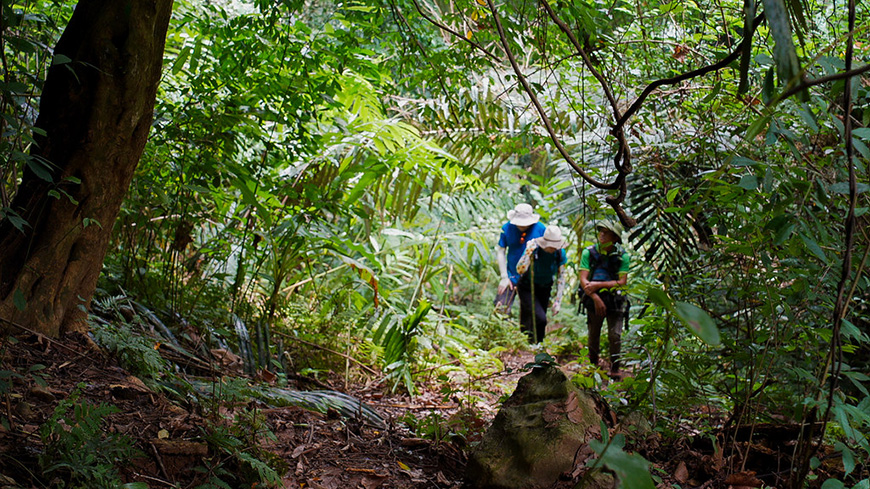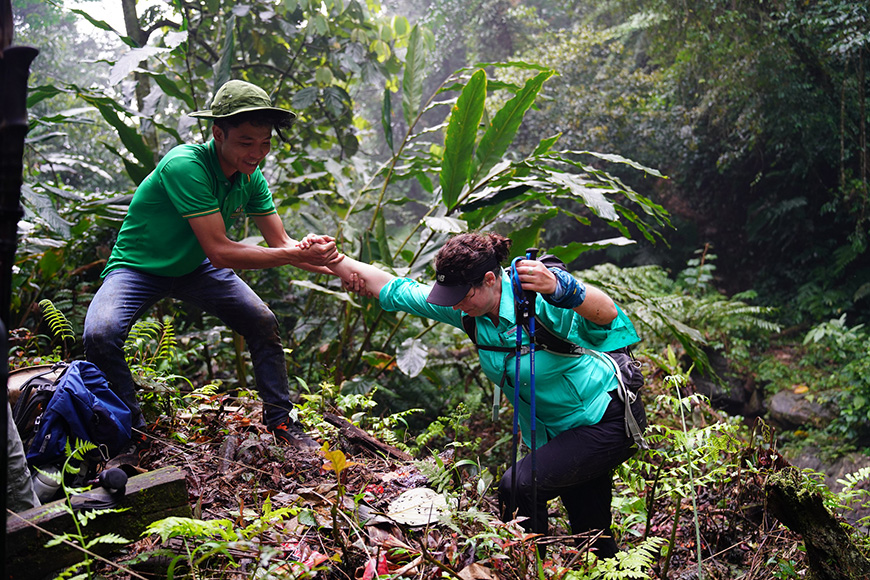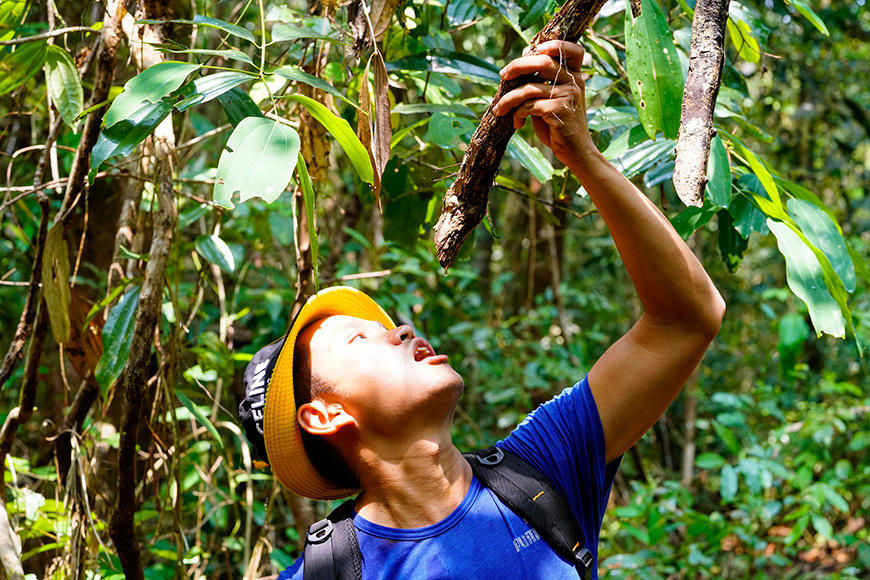Are you looking for a short getaway to recharge your batteries, or a total immersion in the heart of the remote landscapes of Asia? Walking in nature remains the quintessential adventure activity. However, it is essential to clearly distinguish between hiking and trekking to guarantee your safety and choose an activity suited to your abilities.
A brief historical overview: the evolution of walking
Hiking and trekking have very ancient roots.
Originally, walking was first a necessity: people traveled on foot to hunt, trade, migrate, or complete pilgrimages. Great ancient roads, like the Roman roads, bear witness to this movement. In the Middle Ages, walking took on a spiritual dimension, particularly with pilgrimages like the one to Santiago de Compostela, structuring networks of villages and inns.
In the 18th and 19th centuries, walking became a recreational practice. The Romantic movement valued exploration, leading to the formalization of mountaineering and the birth of the first mountain clubs. In the 20th century, the practice became organized with the creation of marked trails, shelters, and guides, making the mountains more accessible. This is also when great mountain ranges like the Himalayas attracted expeditions and, later, trekkers curious about extreme landscapes.
After the Second World War, hiking became democratized with the invention of specialized equipment (shoes, bags, tents) and the development of trail networks (like the GR in Europe). Trekking then became a popular way to discover distant regions. Today, the activity is diversifying with "thru-hiking," the "ultralight" philosophy, and ecotourism. Digital tools (GPS maps, apps) are transforming the preparation and safety of walkers.
.jpg) Hiking routes are often well-maintained and signaled | Mr Linh's Adventures
Hiking routes are often well-maintained and signaled | Mr Linh's AdventuresHiking vs. Trekking: key definitions
Although they share walking as the main activity,
hiking and
trekking are primarily distinguished by their
duration,
difficulty, and the required
level of autonomy.
Hiking: the adventure, simply put
According to the
ISO standard, Hiking is defined as an: "
Adventure activity based on walking and less arduous than trekking."
Hiking in brief
✓ Short duration: It is most often done over one day or a half-day.
✓ Logistical support: The walker is rarely in a situation of total self-sufficiency. Accommodation and meals are often found at planned logistical points (shelters, hotels).
✓ Marked trails: The routes are often well-maintained and signaled, reducing the need for technical navigation skills.
✓ Audience: Accessible to
families and beginners.
 Trekking rails require specific skills significantly increase the difficulty | Mr Linh's Adventures
Trekking rails require specific skills significantly increase the difficulty | Mr Linh's AdventuresTrekking: immersion and autonomy
Trekking is a more committed activity. It is defined as an: "
Adventure activity in a natural environment, self-sufficient for survival, which includes one or more overnight stays and is more arduous than hiking."
Trekking in brief
✓ Self-sufficiency for survival: The trekker must carry all their equipment (tent, food, safety gear) for several days, as they will be cut off from any assistance.
✓ Duration: It extends over several days, or even several weeks, with overnight stays in bivouacs, wild camping, or isolated shelters.
✓ Increased difficulty: The
terrain is often more varied, rough, less marked, and may involve more demanding climate and altitude conditions.
✓ Audience: Reserved for regular athletes and experienced walkers.
 Walking in nature develops the spirit of mutual aid | Mr Linh's Adventures
Walking in nature develops the spirit of mutual aid | Mr Linh's AdventuresLevels of difficulty: measuring the effort (ISO Standard)
The assessment of difficulty is essential for safety and relies on a combination of factors:
| Factor |
Impact on difficulty |
| Physical effort |
Length, elevation gain, and load to carry. The more sustained and long the effort, the higher the difficulty. |
| Required technical ability |
Skills needed to progress (easy climbing, river crossing, etc.). Trails requiring specific skills significantly increase the difficulty. |
| Terrain |
Type of surface (off-trail, scree, glacier, etc.). Unstable or poorly marked terrain demands more concentration and energy (psychological effort). |
| Altitude and climate |
The effect of altitude on the body (mountain sickness) and extreme weather conditions (cold, heat, wind, rain). These factors increase risks and effort. |
 Trekking : Experience the real Jungle Life ! Mr Linh's Adventures
Trekking : Experience the real Jungle Life ! Mr Linh's Adventures
Safety and health: the 4 pillars of adventure
Safety and health are paramount, especially in trekking where the risks (terrain, isolation, weather) are heightened.
Pillar 1: physical preparation (and its benefits)
Walking strengthens the heart, muscles, endurance, and reduces stress. For hiking, regular activity is sufficient. Trekking, however, requires targeted training (cardio + strength training, carrying a loaded pack) several months before departure.
"One day on the trail, eight days of health." - Walker's Proverb
Pillar 2: gear and equipment
Equipment must be adapted to the duration, terrain, and anticipated weather. Choose reliable gear. Make no compromises on appropriate and comfortable shoes, technical clothing (knowing the three-layer technique for wicking, protection, and insulation), and don't forget to check the equipment before departure. Furthermore, it is essential to know how to navigate with a map, compass, or GPS, as network coverage is often absent, especially on a trek.
.jpg) Trekking, where to experience isolation | Mr Linh's Adventures
Trekking, where to experience isolation | Mr Linh's AdventuresPillar 3: anticipating isolation
Autonomy, particularly in trekking, requires serious planning. Inform a relative of your route and planned duration. Anticipate the management of water, food, and shelter, and plan for alert methods (charged phone, beacon). Monitor possible weather changes and know how to adapt or postpone the outing.
Pillar 4: health on the go
Bring a first aid kit and have knowledge of first aid procedures. If you are walking at altitude, be very attentive to acclimatization and the signs of mountain sickness. In a group, listening for signs of fatigue or distress and solidarity are fundamental.
 Walking in nature remains the quintessential adventure activity | Mr Linh's Adventures
Walking in nature remains the quintessential adventure activity | Mr Linh's AdventuresHiking or trekking, let nature write your story
Forget the watch, notifications, and asphalt. When you go on an adventure, whether for a day or a week, you are not just putting one foot in front of the other: you are reconnecting with the very essence of travel, as pilgrims and explorers did before you.
Trekking is a quest for autonomy and a powerful lesson in humility facing the elements. Hiking is a accessible, convivial bubble of serenity, ideal for recharging your batteries.
Every step in Southeast Asia is a promise of stunning landscapes and unforgettable encounters.
So, lace up your walking shoes and come write the next chapter of your legend among the secret trails of Indochina.
Discover and book your next adventure today!